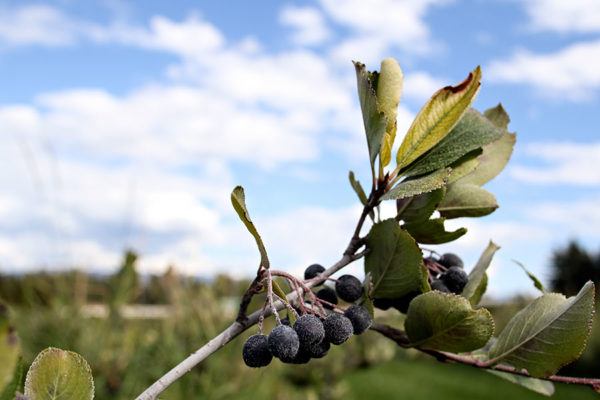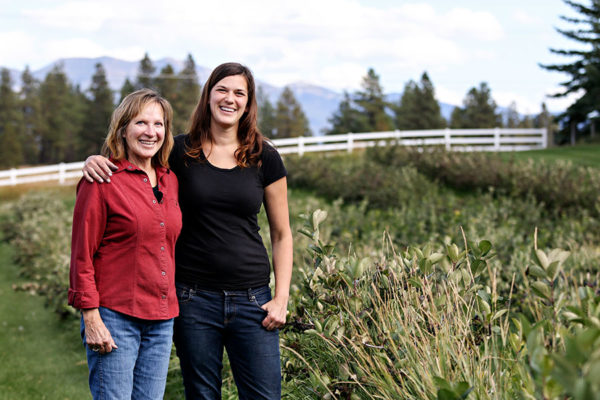Strange cars drive up and down this tree-lined driveway leading to a beautiful white farmhouse, drawn in by the curious bushes in the fields nearby.
“Can we have some of your blueberries?” the people ask, a question farmers Jacy Dowler and her mom, Janice Olson, know will lead to a whole new conversation about berries, antioxidants, and being selective about what we put in our bodies.
First of all, they’re not blueberries, though they look the part. No, these gorgeous, deep-purple berries are aronias, a superfruit with three times the antioxidant power of blueberries and twice that of acai berries.

Secondly, aronia berries have a low sugar content, making them tart with a taste more like a choke cherry than their sweeter cousin, the blueberry. Which would make sense, as the aronia berry is part of the chokeberry family.
Dowler and Olson, known at farmers markets as “the berry girls” but officially as Wintercrest Farms, decided to plant 2.5 acres of aronia berries on the family farm out on Whitefish Stage in 2012. Since then, rows of bushes with branches hung low from the weight of the plump berries have sprouted and dominate the field.
The family has owned the farm since 1981, and Dowler grew up as a farm kid, growing alfalfa and caring for cows, pigs, chickens, and a garden for subsistence living. They heard about the aronia berries from a relative’s friend in Iowa, who had fields of the berries thriving.
“We looked them up online and we thought, ‘Hey, let’s do this,’” Dowler said. “They’re super versatile berries.”

They freeze perfectly, work in smoothies, can become jam, have a home in pancakes, and plenty other applications. Only seven to 10 of the berries are needed for the antioxidant effects, Olson said, so anyone who might not appreciate the taste of the berries can easily hide them in their daily meals.
Other friends are making wine from the berries, and even barbecue sauce. Their biggest customer is Nourishing Cultures, a kombucha brewery in Missoula.
“We’ve got a lot of community support,” Olson said.
When the mom-and-daughter team first started out, they were picking the acres of berries by hand. That was fine with the first harvest, which yielded about two cups of berries. The following year saw two gallons of berries, and then the third year, when the bushes hit maturity, yielded 200 pounds. Now, the field holds probably 3,000 pounds of berries.
Facing down the acreage, Olson and Dowler instead invested in a harvester machine that knocks the hardy bushes around so the berries fall off.
Aronia berries are native to eastern North America, and the plants resist pestilence, survive the winters well, and aren’t a berry that birds will eat.
Locally, the berries from Wintercrest Farms are available at farmers markets, where Dowler and Olson have the same conversations with the visitors to their farms.
“They’re considered the most nutrient-dense fruit on Earth,” Olson said.
